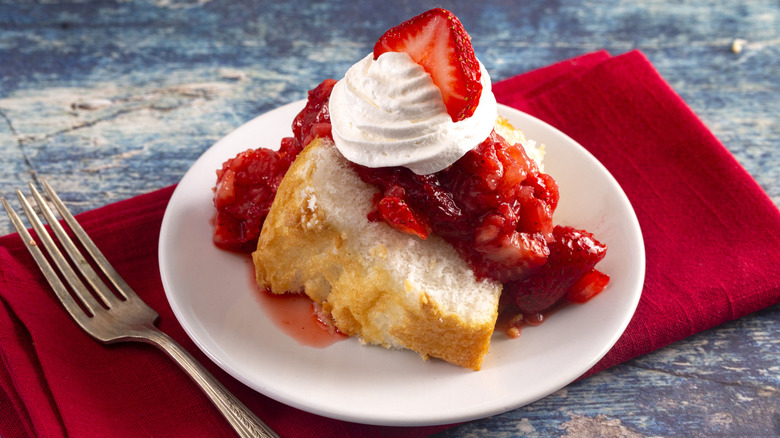For The Best Sponge Cakes, The Right Water Temperature Is Key
Pulling off a perfect sponge cake is a great feeling. Taking that first bite and being rewarded by the gentle give of the delicate crumb is the ultimate reward for your baking efforts. But if you've struggled with sponge cakes that are denser than desired, the answer might lie in the temperature of the water you use.
We spoke with Mallory Morgan, recipe developer and baking blogger at The Curly Spoon, to find out more about how to get the water right and ensure the perfect sponge cake texture. "As odd as it may seem, ice water is a necessary ingredient in a lot of sponge cake recipes to keep the cake delicate and airy," she said. "Cold temperatures slow down the gluten formation process in the batter, making the texture light instead of tough or dense." This is the same principle behind why dunking cookie dough in ice water is such a useful hack for ensuring perfect soft, chewy cookies.
It turns out that ice water helps the formation of sponge cake in multiple ways. "Cold water helps stabilize the egg foam to keep the air in as long as possible," Morgan explained. "It also affects how the flour hydrates by slowing down the process, keeping the batter thinner and easier to fold without losing all of the air you whipped in." This, she said, allows the whipped egg whites to hold their shape, resulting in a better final product.
Not all sponge cakes need ice water
It's important to note that the ice water trick is not a one-size-fits-all solution. Not every sponge cake recipe calls for water in the first place. "For American-style sponge cakes (like angel food cake) that rely solely on whipped egg whites for leavening, ice water can make a big difference," Mallory Morgan said, but she goes on to explain that different styles require different liquids. "Chiffon cakes ... use oil and baking powder to achieve the right texture, so ice water isn't necessary. Génoise cakes are made with warm ingredients because the eggs whip better when heated slightly. Hot milk sponge cakes, as the name suggests, use warm milk for a moist, slightly dense texture," she detailed.
Baking legend Dominique Ansel, owner of Dominique Ansel Bakery, which is set to debut a brand new exciting collaboration with Talenti Gelato & Sorbetto that offers a playful, innovative take on the ice cream sundae, confirmed with Food Republic that his sponge cakes don't include water. For him, the key lies in the grain.
"The type of flour you use definitely matters," Ansel said. "For light and fluffy cakes like sponge cakes, pancakes, or chiffon, we use a pastry flour [that] has a lower gluten content and is milled to a finer texture, so it maintains that airy structure when baking." Also important to remember is the fact that pastry flour is not the same as cake flour, which might not always work for your baking projects.


